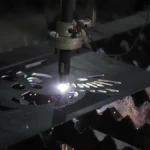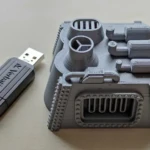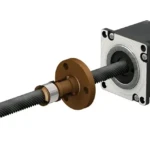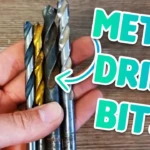The Evolution of CNC Spindle Systems: From Mechanical Complexities to Smart Electric Solutions
In CNC machining, the spindle serves as the literal heart of machine performance. Holding the cutting tool and dictating rotational precision, spindle design has undergone revolutionary changes that redefine efficiency, accuracy, and reliability. While early CNC machines relied on complex mechanical transmissions, modern solutions embrace integrated electro-mechanical design for unprecedented performance.
The Critical Role of Spindle-Tool Interface
The CNC spindle-tool connection demands perfection:
- Flange Mastery: Modern spindles feature short conical flange systems for superior radial/tool positioning
- High-Precision Clamping: Tool holders require nano-level concentricity (< 0.0001") for vibration-free operation
- Minimum Overhang: Short tool protrusion enhances rigidity by 250% compared to conventional designs
These interfaces enable modern high-speed machining (HSM) at speeds exceeding 30,000 RPM while maintaining micron-level tolerances.
The "Zero Transmission" Revolution
Traditional spindle designs faced inherent limitations:
| Transmission Type | Components | Limitations |
|---|---|---|
| Gear-Driven | Gears, shafts | Vibration, heat generation, maintenance |
| Belt-Driven | Belts, pulleys | Slippage, tensioning issues, space needs |
| Direct Coupled | Couplings | Alignment sensitivity, torque limitations |
Progressive manufacturers eliminated these mechanical weak points by adopting integrated electric spindles – where the motor rotor becomes the spindle itself. This "zero transmission" approach reduces components by 70% while achieving power densities of 1.2kW/kg.
Electric Spindle Anatomy: Where Motor and Spindle Merge
Modern electric spindles constitute a paradigm shift in machine design:
- Core Innovation: A frameless motor integrated within the spindle housing
- Thermal Management: Liquid-cooled stator jackets maintain temperatures within ±1°C
- Advanced Bearing Systems: Ceramic hybrid bearings with oil-air lubrication facilitate <0.5μm runout at 40,000 RPM
- Precision Dynamics: Carbon fiber sleeve rotors achieving 1.5G acceleration rates
This integrated architecture yields:
- 50% shorter power transmission path
- 60% reduction in vibration signatures
- 40% faster acceleration/deceleration response
Comparative Analysis of Spindle Architectures
Traditional Power Transmission Spindles
Gear-driven systems required labyrinthine engineering with multiple shafts, shift forks, and clutches – creating vibration harmonics that limited precision. Belt-driven designs (still common in hobbyist CNC) sacrifice rigidity for simplicity.
Belt-driven spindle requiring precise tension control
Heavy-Duty Precision Spindles
For high-load applications, advanced designs utilize:
- Front Support: Double-row cylindrical roller bearings for maximum radial stiffness
- Axial Control: Matched pair thrust bearings controlling micron-level displacement
- Rear Support: Tapered roller bearings eliminating thermal growth distortions
Heavy-duty spindle with optimized bearing configuration
Intelligent Electric Spindles
The latest evolution integrates sensor networks directly within spindle cartridges:
- In-process vibration monitoring via MEMS accelerometers
- Temperature mapping through embedded RTDs
- Torque measurement through current phase analysis
These transform spindles from passive components into data-generating systems capable of predictive maintenance and adaptive machining.
The Precision Manufacturing Imperative
Achieving spindle performance requires extreme manufacturing tolerances:
- Bearing journals held to IT3 precision (0.0002" tolerance)
- Dynamic balancing to G0.4 grade at operating speeds
- Form tolerances below 1/10 wavelength of light
- Surface finishes of Ra 0.05μm on critical interfaces
Micro-precision spindle components requiring nanometer measurements
Industry 4.0 Realities and Adoption
While smart spindles represent industrial evolution, implementation faces practical challenges:
- Traditional spindle rebuild shops face obsolescence as integrated units are replaced, not repaired
- Thermal compensation algorithms require advanced CNC platforms beyond legacy controls
- Networked spindle diagnostics demand IIoT infrastructure missing in 85% of SMEs
- Technician training costs increase exponentially with complexity
For many manufacturers, implementing hybrid solutions offers a transitional path. CNC lathes incorporate intelligent spindle chuck systems while maintaining existing machine structures:
Modern CNC lathe spindle with integrated sensory technology
Future Trajectories of Spindle Technology
We’re entering the era of autonomous spindles:
- Self-balancing Systems: Piezoelectric actuators compensating tool imbalance mid-cut
- Intelligent Diagnostics: Vibration spectrograms predicting bearing failure 150 operational hours in advance
- Surface Control: Power modulation eliminating chatter in thin-wall machining
- Energy Recovery: Regenerative systems converting braking energy into stored power
These innovations transform spindles from static components into responsive subsystems that actively optimize machining processes while reducing human supervision.
The spindle evolution roadmap demonstrates how mechanical simplification enables functional complexity. By integrating what previously required multiple components, today’s electric spindles deliver capabilities inconceivable in conventional gear-driven systems – reducing failure points while expanding capabilities. This electro-mechanical convergence represents not just component improvement, but a fundamental rethinking of rotary power delivery in industrial systems.





















